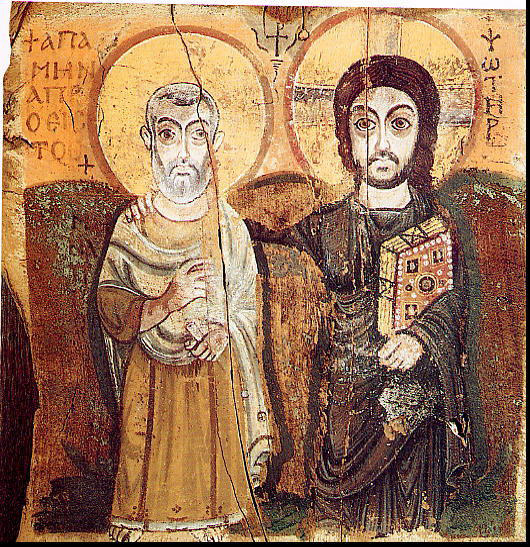Imaging the holy
Below the city of Rome can be found dozens of subterranean burial passageways: the catacombs. Here the martyrs and popes of the early Church were buried, making it a place for prayer for the first Christians and the site for ancient expressions of Christian art. Lining the walls of the catacombs are frescoes. These paintings depict various scenes and persons: Christians at prayer, Adam and Eve in the garden, Jesus as the Good Shepherd, and Jesus and the apostles at the Last Supper, among others.
Since the first centuries of Christianity, the creation and use of Christian art has both developed and been challenged. Successive generations have asked, “Should we image God and holy figures such as angels and saints using paint, wood, and stone? And if so, what is proper and what is forbidden in terms of who and how the divine and the holy should be painted, carved, and sculpted?”
While the early Church was influenced by its Jewish roots, it departed from Judaism’s approach to imaging God. The Jewish people had always been cautious about depicting the divine, citing the strict prohibition against the making of “graven images” of God as contained in the Ten Commandments (see Exodus 20:4). But that prohibition, in the minds of many Christians, was altered when Jesus came among us. When God became man, Christians no longer were left to deduce what God might look like because they had already seen him.

Early Christianity utilized paintings and stone carvings (such as those found on burial sarcophagi), but not often statuary. They readily depicted Jesus working miracles, stories from the Old Testament, and the apostles, especially Peter and Paul. However, with the growth of Islam by the eighth century, depictions of God were viewed as problematic, even immoral, by not only Muslims, but also a growing number of Christians. Christian clergy and laity of both sides of the debate battled for more than a century before the defenders of Christian art — the iconodules — finally triumphed over the iconoclasts.
The Christian tradition of icons (especially significant in the Christian East) and paintings, stained glass, and statuary (in the Christian West) flourished until the Protestant Reformation again challenged the use of art to depict the divine. Protestant reformers were concerned that images of the holy, especially of the Blessed Virgin Mary and the saints, could deflect from worship of God or, even worse, foster idolatry. This ushered in a new era of iconoclasm in which churches were literally made barren with statues and images looted or destroyed.
While some Protestant denominations have reconciled the use of art in churches and homes, others remain wary, seeing it as bordering on idol worship. Many Protestant congregations refrain from forms of representational art in worship spaces, especially crucifixes and statues, yet do embrace the use of the cross and images of Jesus teaching, preaching, and ministering.
Many Protestant congregations refrain from forms of representational art in worship spaces.
Outside of Christianity, depicting God remains a source of conflict. Especially in North Africa and the Middle East where Christians are a persecuted minority, the destruction of icons and statues remains a significant form of oppression. Along with the seizure and destruction of churches, the defilement of these objects symbolic of the holy is especially offensive.
In our own day, as in the past, Catholics and other Christians who defend the use of holy images, including paintings and statues, insist on the symbolic nature of images and on the dignity of created matter.
Catholics cherish these reminders of the sacred, not as something to be adored, but as an aid to prayer and devotion. The Church teaches the immorality of idolatry, “divinizing what is not God,” which occurs whenever one “honors and reveres a creature in place of God” (Catechism of the Catholic Church, 2113). The Church warns against anything that can cause one to lose sight of whom we adore when we worship: the one and true God made known to us through Jesus.
Catholics cherish these reminders of the sacred, not as something to be adored, but as an aid to prayer and devotion.
The ancient dispute about the use of art to depict the holy exists outside of and within Christianity, witnessing to a common concern: the worship of God. Whether one shuns or embraces such images, all who believe themselves to be sons and daughters of God are bound by a common call to worship God “in Spirit and truth” (John 4:23). Since the earliest years of Christianity, Jesus, the angels, and the saints have been depicted by believers to instruct, to edify, and ultimately to aid in prayer to God.


